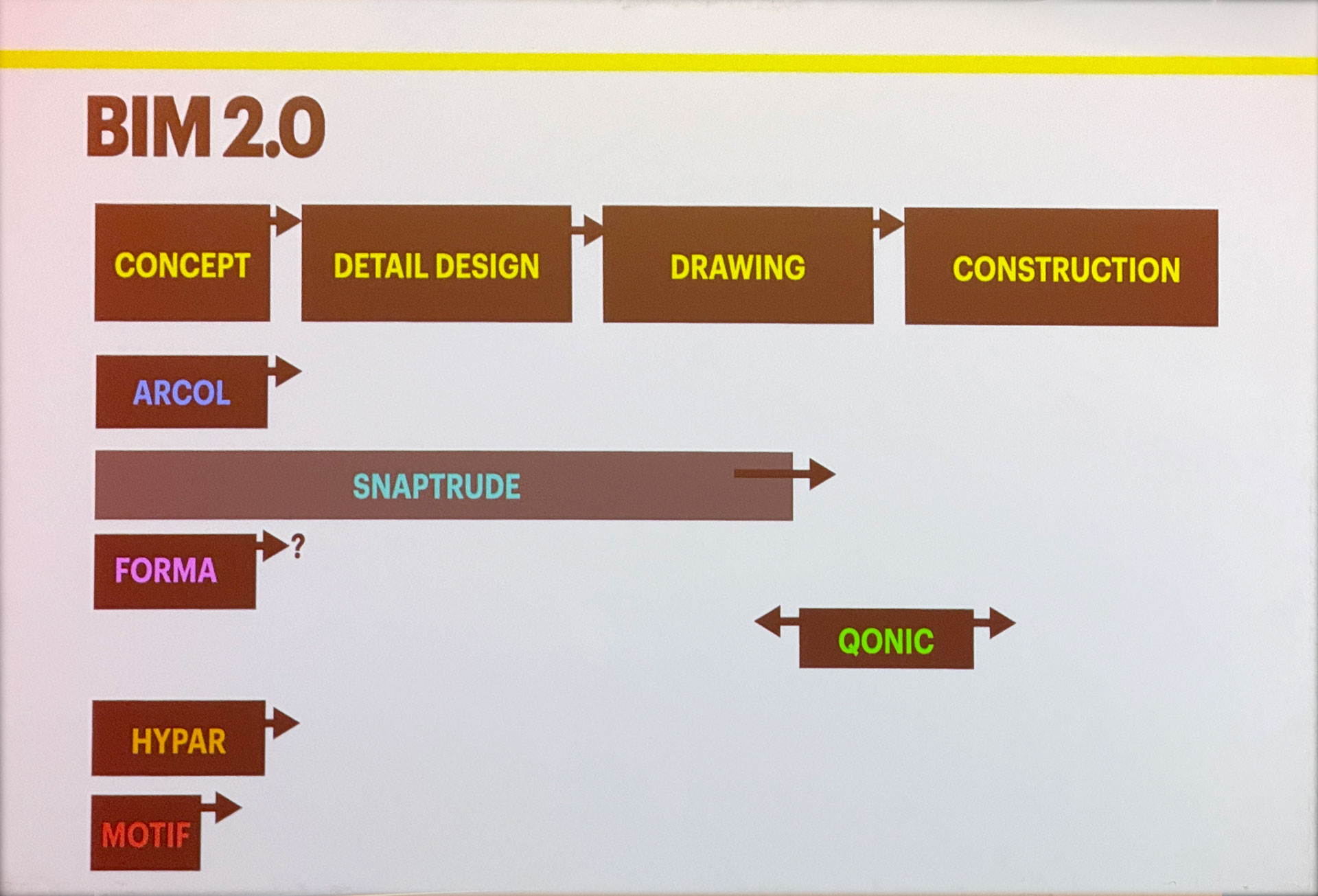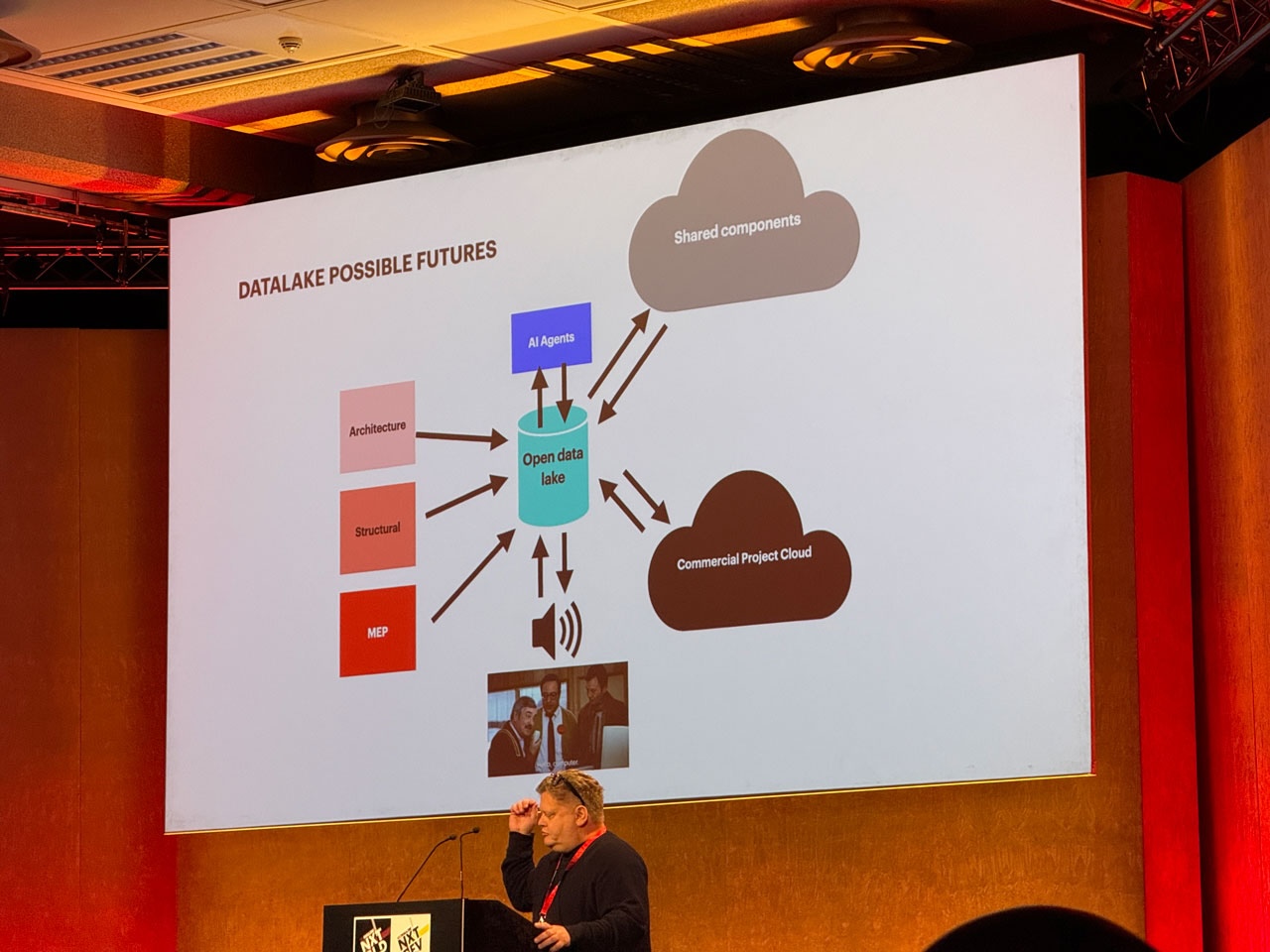The 2025 NXT BLD and NXT DEV conferences gathered a large international crowd of construction technology enthusiasts and developers in London’s Westminster on June 11 and 12. It was exciting to meet many of the industry’s leading innovators and see where AEC tech is headed.
BIM 2.0 in the limelight
If I summarize the events in one term, it would be BIM 2.0. The concept incorporates cloud-native, AI-enhanced architectures, granular data storage, modularity, real-time collaboration, and the use of open standards.
Visionaries are looking even further, and Hypar’s Ian Keough, for example, introduced the concept of BIM 3.0 in his presentation.
The truth, however, is that PDFs and document-based workflows still dominate. Even Revit, which many still consider “the BIM,” is designed for efficient document production, as several presenters pointed out.
Speaking of Revit, according to Carl Christensen of Autodesk, Forma is not going to replace Revit anytime soon. Forma focuses on conceptual and early architectural design.
There are many alternative BIM tools.
Martyn Day, in his ‘Kill BIM’ presentation, pointed to the proliferation of tools aimed at conceptual and early architectural design. They come from startups that are rethinking how we design and collaborate.
On Martyn’s slide, he placed Arcol, Snaptrude, Forma, Hypar, and Motif in the Concept category, with Snaptrude also extending to Detail Design and Drawing. He positioned Qonic between the Drawing and Construction phases. Martyn admitted that his graphic was not exhaustive or accurate, but it effectively communicated the situation.

MEP is a massive part of construction budgets and is growing steadily; still, not many of the new tools presented venture into that category. Graphisoft was a notable exception. Gábor Kovács-Palkó introduced Graphisoft MEP Designer, which extends the previous MEP features in Archicad.
AI is maturing
According to several presenters, AI is transitioning from hype to real business value. It helps with compliance, automates processes, and enhances creativity. Artificial intelligence also revolutionizes the way we approach software development. “What happens when everything is quicker,” Keir Regan-Alexander asked.
Today, only a fraction of engineers code extensively, but tools like VIKTOR.ai will empower many domain experts with coding capabilities. Stijn Jansen demonstrated that he could code a working app with minimal guidance during his brief presentation.
Tal Friedman noted that our construction ecosystem is based on 30-year-old technology and that BIM does not necessarily result in better buildings. He argued that AI can’t give meaning to buildings, but buildings can be presented in text. “Design becomes data, data becomes geometry, which becomes code, and code becomes fabrication.”
Industrializing construction
One step toward a manufacturing-type construction is the use of kits of parts and configurators.
Peter Harman showcased Infinitive’s AI-powered product configurator platform. It can be used for various purposes, including modular construction.
Oliver Green from Kope demonstrated how digitalizing panelized prefab design and production had provided tremendous efficiency.
Martin (Marty) Rozmanith pointed out that architects already have an extensive repository of reasonable design solutions to reuse, but not great tools to do it. Skema uses AI to turn past BIM projects into flexible, reusable “3D puzzle pieces” that architects can easily adapt for new projects.
The question of data
As companies transition from desktop BIM software to AI-powered cloud BIM services, the questions of who will use your data and how it will be used become critical.
May Winfield from Buro Happold is knowledgeable about these matters and highlighted some concerning aspects of EULAs. Read carefully what you sign up for, and don’t assume that anything companies say on their websites is binding, May reminded the audience.
If you want more autonomy and control over your data, follow the path Martyn discussed during his presentation: company-specific open data lakes. They provide data for BIM tools, AI agents, and external services. This strategy is not just a technical solution but a paradigm change. Data, rather than its presentation, becomes the core of operations and collaboration, opening new revenue opportunities.


And so much more
In addition to the few picks from the conferences’ programs, there was so much great content that covering it in one newsletter is impossible.
One more thing I want to highlight is Cyclops, an environmental analysis tool developed by Foster + Partners. The company announced that the plugin for Grasshopper in Rhino 3D is now a free tool for everyone to use.
Conferences as change catalysts
It was great to see many of the future-builders I’ve featured on AEC Business or know through social media discussions. I also made new acquaintances who may appear on AEC Business in the future.
Before attending the NXT BLD/DEV event, I participated in the Nordic Façade Forum in Helsinki. Three information-packed events across two countries over one week were highly inspiring.
People who come to these forward-looking events are primarily innovators and early adopters. I hope their enthusiasm and example will carry on to the industry that critically needs to modernize the way it builds with information.
View the original article and our Inspiration here


Leave a Reply